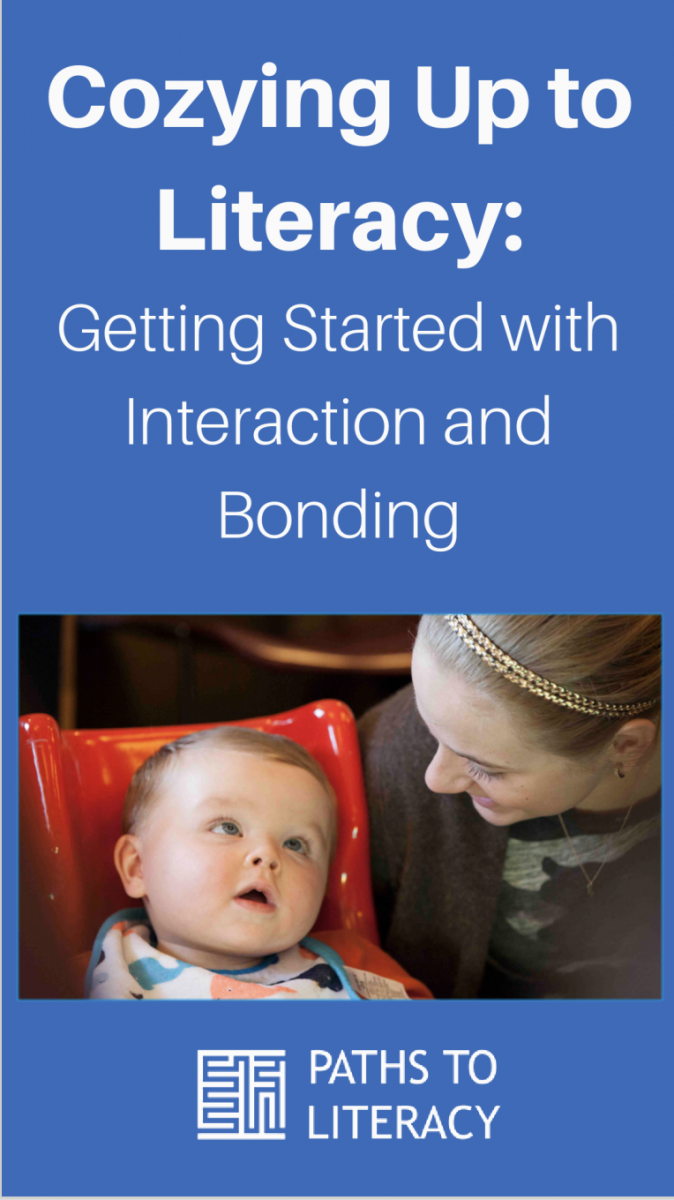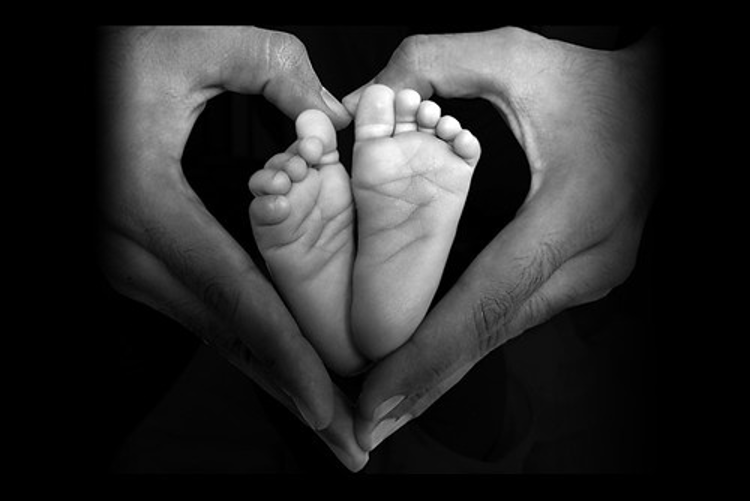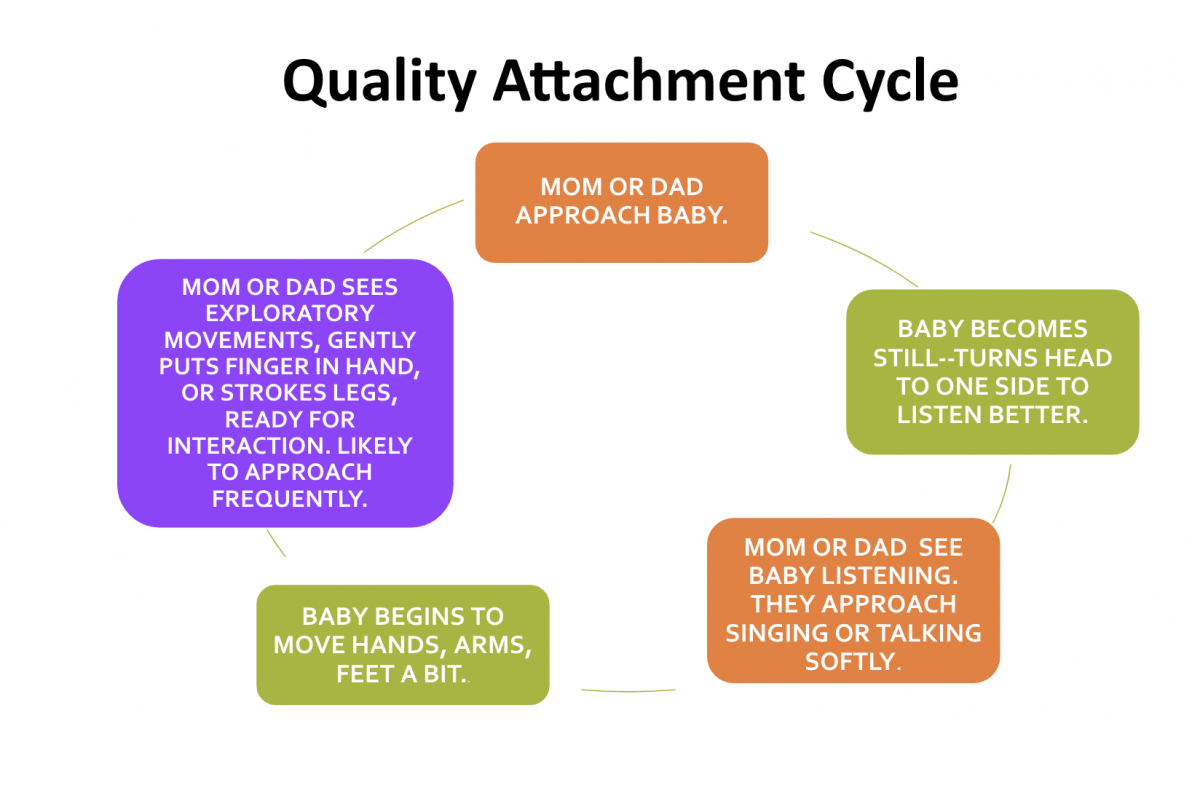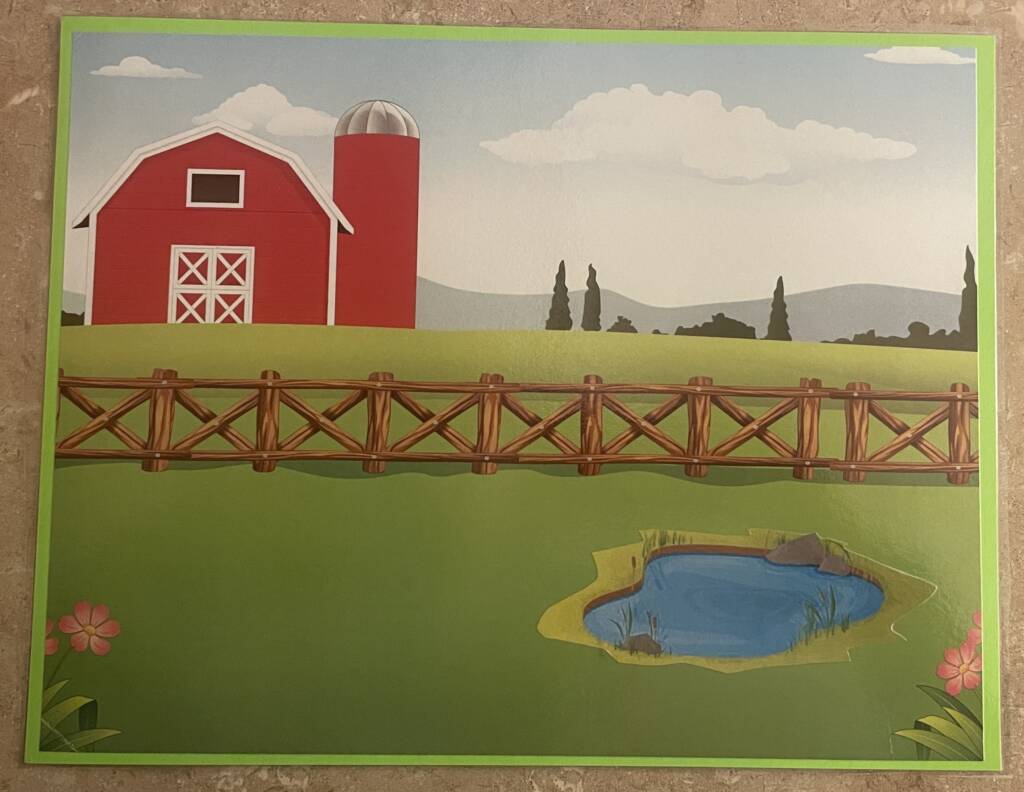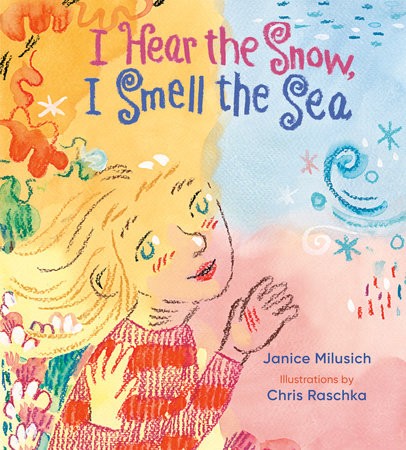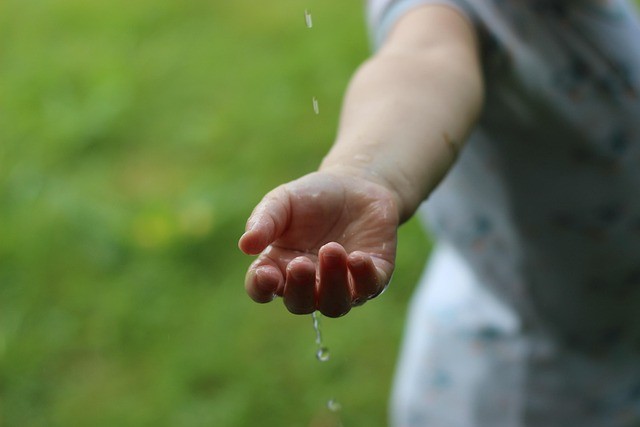Can you remember learning to read? Do you remember the first time you saw a word and knew what it said and meant? Chances are that that’s a stretch for most of us. Why? Most of us can remember the first time we rode a bike, swam across the pool, or successfully made our first delicious chocolate chip cookies. Why can’t we remember the first time a word had meaning? Because learning to find meaning in words, spoken and written, is more like a river running between two banks, and these other tasks are more like the stepping stones we use to cross the water.
Learning to read, like learning language, begins the moment we’re born. They are immersive processes. A child learns through sensory-rich experiences what words like warm, sour, soft, and bouncy mean. It is playing on the floor with the family pets that teaches her the difference between Ruffin’s “dogness” and Fluffy’s “catness.” How does this immersion begin?
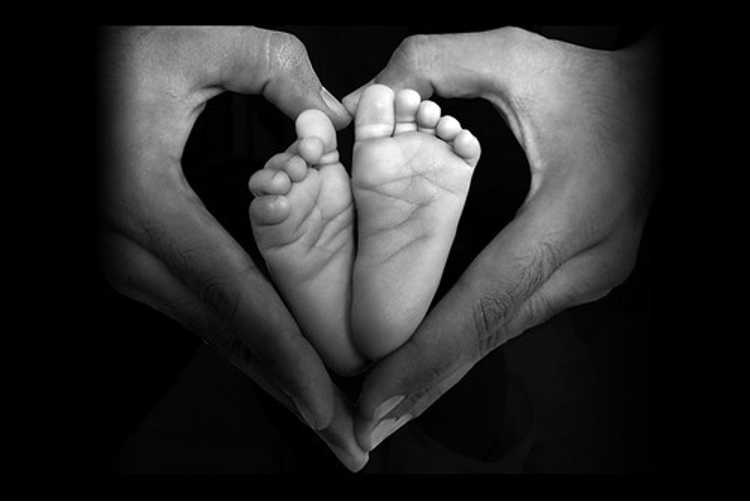
Building Trusting Relationships
Love is the first literacy skill that our little ones learn! Trusting and meaningful relationships motivate a child to want to be with and learn from others (Koenig and Farrenkopf, 1997). “Literacy in its most basic form is the ability both to understand and to express one’s feelings, desires and experiences to others….” (Perkins Panda Resource Guide, 2002). All babies communicate. They express their discomfort, displeasure, happiness and trust in many different ways.
Even though they can’t use words, we have a pretty good idea about how these babies are feeling!

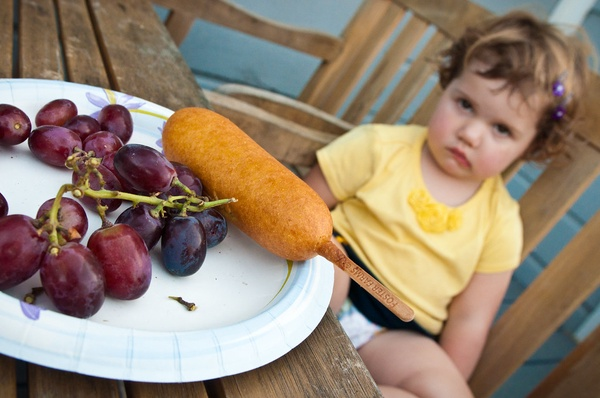
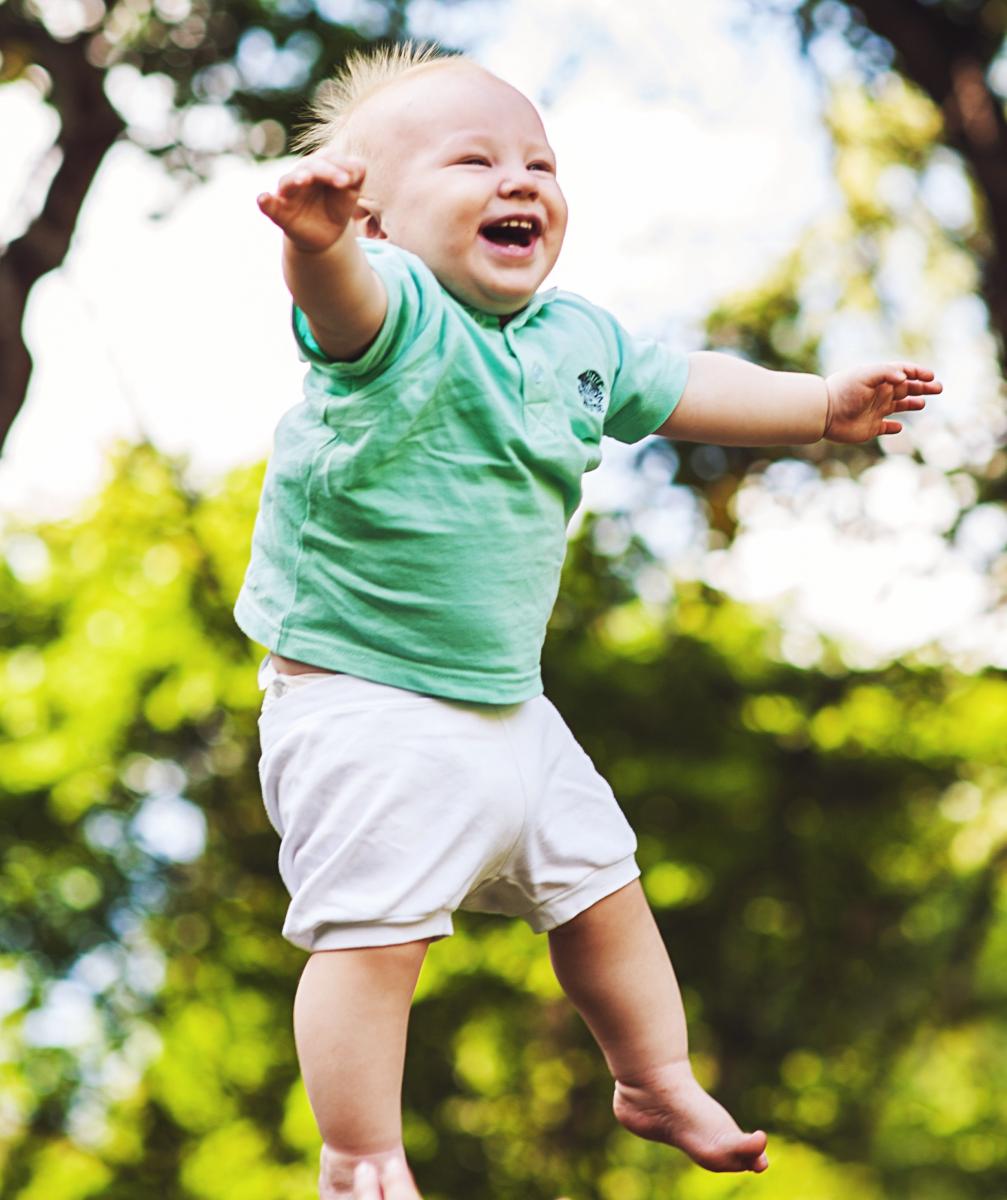
How Do Babies Communicate?
Children in warm social relationships want to communicate with others. They feel confident that when their needs are expressed they will be met. Babies become attached securely to their caregivers when caregivers are consistent and responsive. When babies trust that their needs will be met and that the world is a safe place for them, they have the confidence to explore and learn more about their surroundings.
Communication occurs when someone’s cues are recognized, interpreted correctly and responded to. Perhaps you have had the experience of trying to communicate with someone who spoke a different language than you. The difficulty comes when people have a hard time understanding each other’s cues. In the case of two people who speak different languages, they will try to reach understanding by using objects, vocalizations, body language, and even drawing pictures to convey their meaning.
Babies’ cues include body language and vocalizations to try to communicate with us. We respond with touch, soothing sounds, words, and the action we believe the baby is seeking (cuddling, changing, feeding, etc.) Sometimes, a baby may cry for a prolonged period of time because of discomfort, but even when we cannot relieve their distress, we still communicate caring and responsiveness to them by holding, rocking, or using a loving touch to help them be more comfortable. The baby begins to trust that her needs are important, and she grows more confident in expressing them.
The Attachment Cycle
Imagine this scenario:
- Baby wakes up and begins to coo and kick.
- Mom or Dad hears Baby and walks down the hall to the room.
- Baby hearing them coming begins to kick and vocalize a little more.
- Mom or Dad comes in talking to Baby, picks her up, and engages her in the morning routine.
Many of us have participated in just such an interaction countless times. This is attachment!
The attachment cycle can be disrupted when baby’s cues are not well understood. Imagine the scenario differently:
- Baby wakes up and begins to coo and kick.
- Mom or Dad hears Baby and walks down the hall to the room.
- Baby hearing them coming in becomes quiet and still. She may turn her head to listen better. (A typical response for a baby with vision impairment)
- Mom or Dad, thinking Baby is turning away, becomes confused and hurt.
- They become frustrated while attending to Baby–they approach less and Baby fusses more.
See the following figure for how this sad interaction can be turned around!
Making Use of the Baby’s Senses
Attachment, communication, and literacy are enhanced by using all of the baby’s senses.
Hearing: Speak, sing, and coo with your baby. Encourage other family members to as well. It’s never too early to label environmental sounds such as the refrigerator opening or the sounds of siblings coming home from school.
Smell: Let the baby smell products and foods before using them with her. Name them as she sniffs.
Touch: Let the baby feel a variety of textures–remember her feet might be more willing to explore textures than her hands at first. This is OK! Encourage safe exploration with her hands, face, feet and other parts of the body.
Taste: Name the foods as baby tries them. Play games and sing songs while she explores new tastes and textures of food. Make meal time a loving and fun experience. When nursing or bottle feeding, try to have a couple of feedings a day that are unrushed and a tender time for singing, cooing and getting to know your baby.
Vision: Babies with low vision can be supported to make eye contact or look at faces when caregivers use bright colored accessories such as hats, jewelry and eyeglasses. Darkening eyebrows and lashes, or using a bright lipstick can help Baby find your face.
Include Your Child in Daily Activities
As you go about your daily activities, remember to include the baby by talking to her and taking her along when possible. Make sure she has lots of experiences taking milk from the fridge, food from the pantry or toys from the bin. This kind of inclusion enhances your relationship and gives Baby an understanding of her environment and how it works. No magic milk or favorite bunny which appear out of nowhere! To build trust, tell her when you are going to touch her, change her, when the spoon is approaching, etc.
Babies Learn Through Play
Play is a great way to increase attachment and literacy! Rhythmic games such as “Rock-a-bye, Baby” and “Horsie, Horsie” build memory and the cadence of language. Stop and go games build Baby’s ability to communicate. This is accomplished by doing an activity your baby enjoys: bouncing on your knee, swinging in a blanket, tickling, or grabbing the baby’s feet and jiggling them back and forth. Start the activity, then suddenly stop. Wait for Baby to give you a cue: a slight wiggle, a smile, kicking her feet, etc. This is her asking for more. When she gives you the cue, repeat the activity. She will let you know when she is done, or you will let her know when you need to be done!
The happy feeling of getting to go to McDonald’s and recognizing the “golden arches;” the sight and feeling of a package of cookies or M&M’s; the cozy warmth of being in the lap of a loving adult so often that we memorized the story and recognized the covers are the reasons why it is difficult to remember when we learned to read. It was a fluid process that surrounded us with sights, sounds and feelings. With just a little thought and planning, babies of all abilities can experience reciprocal communication and literacy through daily activities, meaningful interactions, and loving relationships.
Looking for more ideas for young children? See also Welcome Parents! Get Started Here with Questions about Literacy for Your Young Child.
